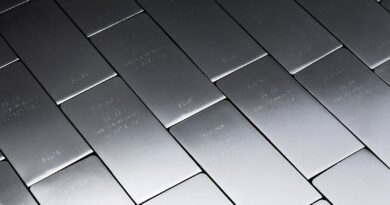Platinum: hydrogen fuel cell buses are developing rapidly
According to the International Energy Agency Advanced Fuel Cells Technology Collaboration Programme, 5,648 hydrogen fuel cell buses were in deployment globally as at the end of 2021. Hydrogen fuel cell buses are equipped with fuel cells that use proton exchange membrane (PEM) technology, which relies on a platinum catalyst. China is at the forefront of the growing hydrogen fuel cell bus market, with a fleet of 5,290, giving it alone an almost 94 per cent share.
Plans set out by the government in China, including the New Energy Vehicle (NEV) Industry Development Plan (2021-2035) and Energy Saving and NEV Technology Roadmap 2.0, are aimed at stimulating the country’s overall market for zero-emissions electric vehicles, including both battery electric vehicles (BEVs) and fuel cell electric vehicles (FCEVs). By 2035, the market share of NEVs in China is expected to exceed 50 per cent. Growth in FCEVs is expected to be led by the heavy-duty vehicle segment, including trucks and buses.
At the local level, more than 20 regions in China have so far issued phased plans for the promotion of FCEV deployment. Shanghai, for example, has recently proposed a 2023 target of ‘100 hydrogen refuelling stations, 100 billion yuan of industry output, 10,000 FCEVs deployed’. In Nanjing, the Lishui Economic Development Zone of Nanjing has an objective of deploying a 300-vehicle hydrogen fuel cell bus fleet.
The recent Beijing Winter Olympics showcased China’s commitment to FCEVs. Over 850 PEM hydrogen fuel cell buses were used across the Games to transport participants around the main competition site, Zhangjiakou, and the alpine competition zone at Yanqing. As well as offering excellent range and quick refuelling times – lengthy downtime for recharging is unnecessary, unlike a BEV – hydrogen fuel cell buses are also well suited to the cold conditions experienced during the Winter Olympics; the battery performance in a BEV is affected by low temperatures as these can cause the battery to drain more quickly.
Growing number of hydrogen fuel cell buses
Europe and the UK are also seeing growing numbers of hydrogen fuel cell buses on their roads – there are currently well over 150 fuel cell buses in operation across the continent. Japan’s Toyota Motor Corporation has demonstrated its commitment to this market in a collaboration with Portugal’s CaetanoBus SA to build hydrogen fuel cell buses, using technology it developed for its Mirai passenger FCEV. The result is the H2.City Gold, which is already in operation in Copenhagen, Denmark as well as Madrid, Spain and Bielefeld, Germany.
In the UK, hydrogen-powered fuel cell buses are carrying passengers on the streets of the West Midlands for the first time since 20 hydrogen fuel cell double decker buses started service at the end of last year.
The hydrogen fuel cell bus sector in the US received a recent boost with the General Services Administration’s (GSA) announcement that its new five-year transit bus programme includes hydrogen fuel cell buses for the first time. GSA provides centralised procurement for the federal government, overseeing approximately US$75 billion in annual contracts.




